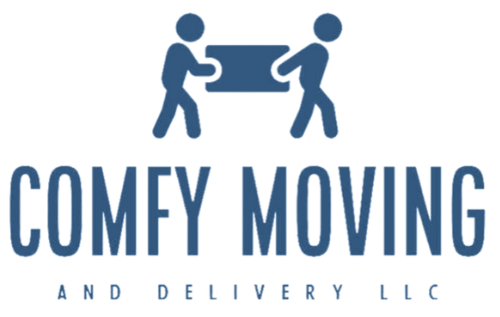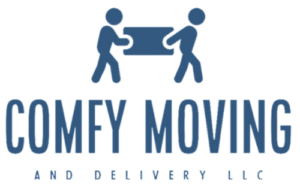How to Save Money on Long Distance Moves
Long-distance moves can be expensive, but with careful planning and smart decisions, it’s possible to significantly reduce the costs. Whether you’re moving your home or relocating an office, here are some key strategies to save money on a long-distance move without compromising on the quality of the service.
1. Plan Ahead
The earlier you start planning your move, the more opportunities you have to save money. Start by creating a detailed moving checklist that includes all tasks and timelines. This allows you to book services in advance, which often comes with discounts. Last-minute bookings, on the other hand, may lead to higher rates due to limited availability.
When planning:
- Get multiple quotes from moving companies to compare prices.
- Schedule your move during off-peak seasons (typically mid-fall to early spring) when demand is lower.
- Avoid weekends and holidays if possible, as prices tend to be higher during these times.
2. Declutter Before the Move
The cost of a long-distance move is often determined by the weight or volume of your belongings. The fewer items you move, the cheaper the cost. Before packing, take the time to declutter and get rid of things you no longer need or use. This can include old furniture, clothes, or equipment that won’t be useful in your new space.
To further reduce costs:
- Sell items in good condition through online platforms, garage sales, or consignment shops.
- Donate usable items to charity for a potential tax deduction.
- Recycle or properly dispose of anything that can’t be sold or donated.
3. Compare Moving Companies
Not all moving companies offer the same services or prices, so it’s important to shop around. Gather quotes from at least three reputable moving companies and compare their rates and services. Be sure to ask for a detailed breakdown of all costs, including any potential additional charges, such as packing services, fuel surcharges, or fees for moving bulky items.
To find the best deal:
- Look for companies that offer discounts for early bookings.
- Ask if they have referral discounts or loyalty programs.
- Negotiate to get a better rate by showing competing offers.
4. Consider a DIY Move or Hybrid Option
If you’re comfortable doing some of the work yourself, you can save a significant amount of money by opting for a DIY move or a hybrid moving option. Here are some choices:
- Rent a moving truck: If you have the time and manpower, renting a truck and driving it yourself can be a cost-effective option.
- Portable moving containers: Companies like PODS allow you to pack your belongings at your own pace, then transport the container to your new location. This is often cheaper than full-service moving companies.
- Hire labor-only movers: Instead of hiring a full-service moving company, you can hire movers to load and unload your truck. This saves you money on transportation while still getting professional help for heavy lifting.
5. Pack Yourself
Professional packing services can add a significant cost to your move. To cut down on expenses, consider packing your own belongings. While this requires more effort and time, it can save you a lot of money. Here are some tips for packing on a budget:
- Use free or cheap packing materials: Collect free boxes from local stores, friends, or online marketplaces. Use towels, blankets, or old clothes to wrap fragile items instead of buying bubble wrap.
- Label boxes carefully: This helps movers know how to handle them and will make unpacking easier.
- Pack efficiently: Pack items tightly to minimize the number of boxes and prevent damage during transit.
6. Claim Tax Deductions
If your move is work-related, you might be able to deduct certain moving expenses from your taxes. These deductions can include the cost of transporting your belongings, storage fees, and travel expenses related to the move. Check with a tax professional to see if your move qualifies for deductions and ensure you keep all receipts and documentation for filing.
7. Avoid Hidden Fees
Long-distance moves often come with hidden fees that can quickly add up. To avoid surprises, ask your moving company for a full list of potential extra charges and ensure that they are transparent about their pricing. Common hidden fees include:
- Long carry fees: Charged if movers have to carry items a long distance from the truck to your door.
- Stairs or elevator fees: Additional charges for moving items up or down flights of stairs or in an elevator.
- Fuel surcharges: Especially for long-distance moves, some companies charge extra for fuel.
Make sure to clarify these costs upfront to avoid any unexpected charges.
8. Ship Items by Freight
For long-distance moves, it might be cheaper to ship some of your belongings via freight instead of hiring a moving truck. This is especially useful for large but not immediately necessary items. Freight shipping companies can transport your items for a lower cost, though it may take longer to arrive.
Consider freight shipping for:
- Non-urgent items that you don’t need right away.
- Large or bulky items that would otherwise increase the weight of your move.
9. Use Moving Discounts
Many moving companies offer discounts for various groups or circumstances. Look for discounts that apply to you, such as:
- Military discounts: For active-duty military personnel and veterans.
- Student discounts: Many moving companies offer deals for students moving for college.
- Senior discounts: Some companies offer special rates for seniors relocating.
- AAA or membership discounts: If you’re a member of organizations like AAA, you may be eligible for reduced rates.
10. Insure Your Belongings Properly
While it may seem counterintuitive, investing in the right insurance coverage can actually save you money in the long run. Basic moving insurance provided by moving companies typically offers minimal coverage, which may not be enough for valuable or fragile items. Opting for comprehensive insurance can protect you from costly replacements or repairs in case something gets damaged during the move.
Check whether your current homeowners or renters insurance covers items during a move, and if not, consider purchasing additional coverage.
Conclusion
Moving long distances doesn’t have to break the bank. By planning ahead, packing yourself, and taking advantage of discounts and cost-effective options like DIY moves or portable containers, you can significantly reduce your moving expenses. Additionally, staying informed about potential hidden fees and finding the right moving company for your budget will help ensure a successful and cost-effective long-distance relocation.









